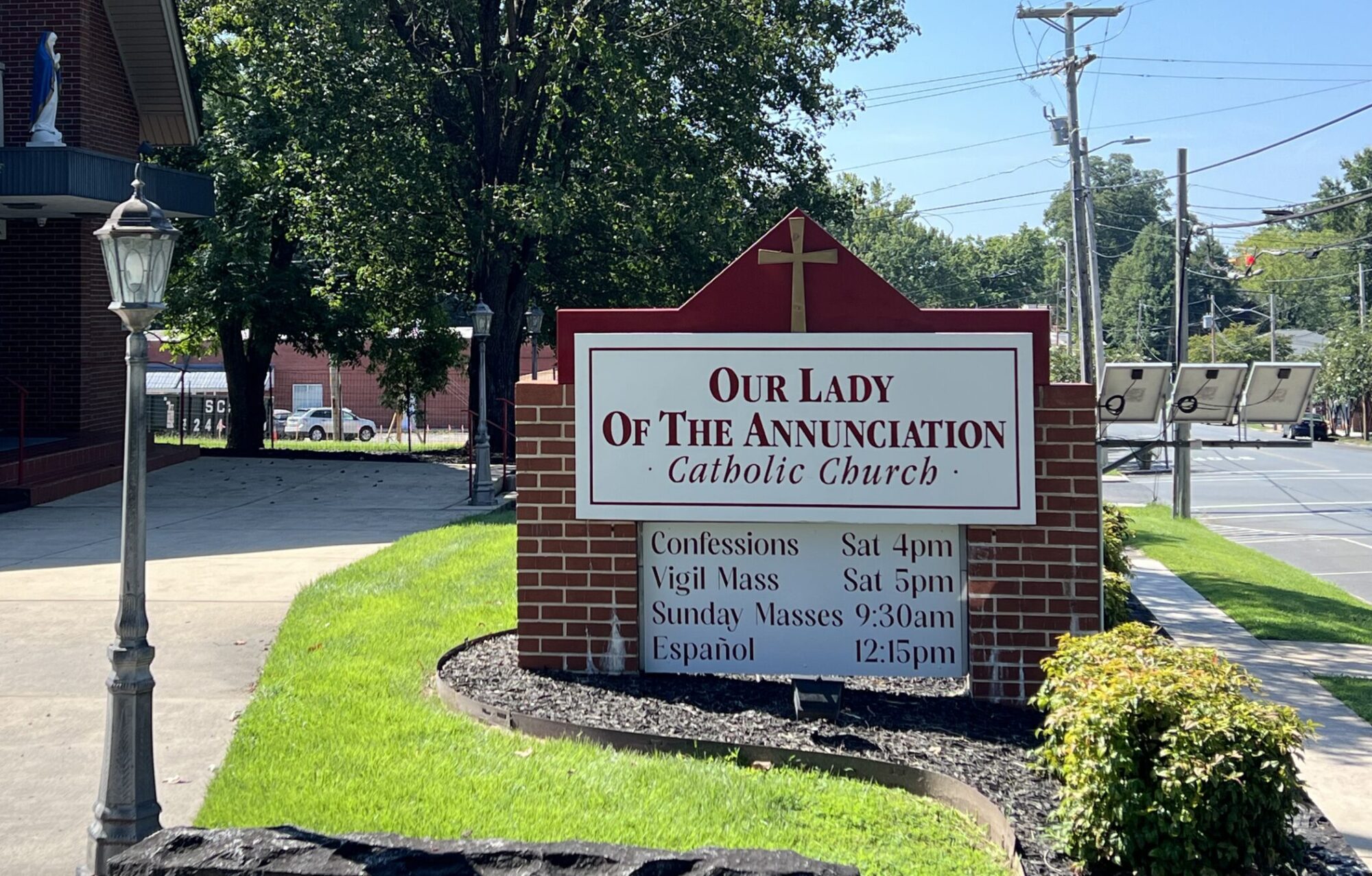
//Bob Holmes Contemplative Monk//

416 N 2nd St, Albemarle, NC, 28001 | (704) 982-2910

//Bob Holmes Contemplative Monk//

//Clergy Coaching Network//

//Clergy Coaching Network//

//Clergy Coaching Network//

We continue our examination of the fifth commandment, taking a closer look at the sin of euthanasia. Fr. Mike emphasizes that whatever the motive, the action of ending a life in order to eliminate suffering is still a sin. He also emphasizes that palliative care, however, is an important and special form of charity and love. Today’s readings are Catechism paragraphs 2276-2279.
Click on link: https://youtu.be/v20Vg6CR9D0?si=VYz_4Ik-Ji83lZ27
Saint John of Capistrano’s Story (June 24, 1386 – October 23, 1456)
It has been said the Christian saints are the world’s greatest optimists. Not blind to the existence and consequences of evil, they base their confidence on the power of Christ’s redemption. The power of conversion through Christ extends not only to sinful people but also to calamitous events.
Imagine being born in the 14th century. One-third of the population and nearly 40 percent of the clergy were wiped out by the bubonic plague. The Western Schism split the Church with two or three claimants to the Holy See at one time. England and France were at war. The city-states of Italy were constantly in conflict. No wonder that gloom dominated the spirit of the culture and the times.
John Capistrano was born in 1386. His education was thorough. His talents and success were great. When he was 26 he was made governor of Perugia. Imprisoned after a battle against the Malatestas, he resolved to change his way of life completely. At the age of 30 he entered the Franciscan novitiate and was ordained a priest four years later.
John’s preaching attracted great throngs at a time of religious apathy and confusion. He and 12 Franciscan brethren were received in the countries of central Europe as angels of God. They were instrumental in reviving a dying faith and devotion.
The Franciscan Order itself was in turmoil over the interpretation and observance of the Rule of St. Francis. Through John’s tireless efforts and his expertise in law, the heretical Fraticelli were suppressed and the “Spirituals” were freed from interference in their stricter observance.
John of Capistrano helped bring about a brief reunion with the Greek and Armenian Churches.
When the Turks captured Constantinople in 1453, John was commissioned to preach a crusade for the defense of Europe. Gaining little response in Bavaria and Austria, he decided to concentrate his efforts in Hungary. He led the army to Belgrade. Under the great General John Hunyadi, they gained an overwhelming victory, and the siege of Belgrade was lifted. Worn out by his superhuman efforts, Capistrano was an easy prey to an infection after the battle. He died on October 23, 1456.
Reflection
John Hofer, a biographer of John Capistrano, recalls a Brussels organization named after the saint. Seeking to solve life problems in a fully Christian spirit, its motto was: “Initiative, Organization, Activity.” These three words characterized John’s life. He was not one to sit around. His deep Christian optimism drove him to battle problems at all levels with the confidence engendered by a deep faith in Christ.
Saint John of Capistrano is Patron Saint of:
Judges
Saint John Paul II’s Story (May 18, 1920 – April 2, 2005)
“Open wide the doors to Christ,” urged John Paul II during the homily at the Mass where he was installed as pope in 1978.
Born in Wadowice, Poland, Karol Jozef Wojtyla had lost his mother, father, and older brother before his 21st birthday. Karol’s promising academic career at Krakow’s Jagiellonian University was cut short by the outbreak of World War II. While working in a quarry and a chemical factory, he enrolled in an “underground” seminary in Kraków. Ordained in 1946, he was immediately sent to Rome where he earned a doctorate in theology.
Back in Poland, a short assignment as assistant pastor in a rural parish preceded his very fruitful chaplaincy for university students. Soon Fr. Wojtyla earned a doctorate in philosophy and began teaching that subject at Poland’s University of Lublin.
Communist officials allowed Wojtyla to be appointed auxiliary bishop of Kraków in 1958, considering him a relatively harmless intellectual. They could not have been more wrong!
Bishop Wojtyla attended all four sessions of Vatican II and contributed especially to its Pastoral Constitution on the Church in the Modern World. Appointed as archbishop of Kraków in 1964, he was named a cardinal three years later.
Elected pope in October 1978, he took the name of his short-lived, immediate predecessor. Pope John Paul II was the first non-Italian pope in 455 years. In time, he made pastoral visits to 124 countries, including several with small Christian populations.
John Paul II promoted ecumenical and interfaith initiatives, especially the 1986 Day of Prayer for World Peace in Assisi. He visited Rome’s main synagogue and the Western Wall in Jerusalem; he also established diplomatic relations between the Holy See and Israel. He improved Catholic-Muslim relations, and in 2001 visited a mosque in Damascus, Syria.
The Great Jubilee of the Year 2000, a key event in John Paul’s ministry, was marked by special celebrations in Rome and elsewhere for Catholics and other Christians. Relations with the Orthodox Churches improved considerably during his papacy.
“Christ is the center of the universe and of human history” was the opening line of John Paul II’s 1979 encyclical, Redeemer of the Human Race. In 1995, he described himself to the United Nations General Assembly as “a witness to hope.”
His 1979 visit to Poland encouraged the growth of the Solidarity movement there and the collapse of communism in central and eastern Europe 10 years later. John Paul II began World Youth Day and traveled to several countries for those celebrations. He very much wanted to visit China and the Soviet Union, but the governments in those countries prevented that.
One of the most well-remembered photos of John Paul II’s pontificate was his one-on-one conversation in 1983, with Mehmet Ali Agca, who had attempted to assassinate him two years earlier.
In his 27 years of papal ministry, John Paul II wrote 14 encyclicals and five books, canonized 482 saints and beatified 1,338 people. In the last years of his life, he suffered from Parkinson’s disease and was forced to cut back on some of his activities.
Pope Benedict XVI beatified John Paul II in 2011, and Pope Francis canonized him in 2014.
Reflection
Before John Paul II’s funeral Mass in St. Peter’s Square, hundreds of thousands of people had waited patiently for a brief moment to pray before his body, which lay in state inside St. Peter’s for several days. The media coverage of his funeral was unprecedented.
Presiding at the funeral Mass, Cardinal Joseph Ratzinger—then dean of the College of Cardinals and later Pope Benedict XVI—concluded his homily by saying: “None of us can ever forget how, in that last Easter Sunday of his life, the Holy Father, marked by suffering, came once more to the window of the Apostolic Palace and one last time gave his blessing urbi et orbi (‘to the city and to the world’).
“We can be sure that our beloved pope is standing today at the window of the Father’s house, that sees us and blesses us. Yes, bless us, Holy Father. We entrust your dear soul to the Mother of God, your Mother, who guided you each day and who will guide you now to the glory of her Son, our Lord Jesus Christ. Amen.”
Saint Hilarion’s Story (c. 291 – 371)
Despite his best efforts to live in prayer and solitude, today’s saint found it difficult to achieve his deepest desire. People were naturally drawn to Hilarion as a source of spiritual wisdom and peace. He had reached such fame by the time of his death that his body had to be secretly removed so that a shrine would not be built in his honor. Instead, he was buried in his home village.
Saint Hilarion the Great, as he is sometimes called, was born in Palestine. After his conversion to Christianity, he spent some time with Saint Anthony of Egypt, another holy man drawn to solitude. Hilarion lived a life of hardship and simplicity in the desert, where he also experienced spiritual dryness that included temptations to despair. At the same time, miracles were attributed to him.
As his fame grew, a small group of disciples wanted to follow Hilarion. He began a series of journeys to find a place where he could live away from the world. He finally settled on Cyprus, where he died in 371 at about age 80.
Hilarion is celebrated as the founder of monasticism in Palestine. Much of his fame flows from the biography of him written by Saint Jerome.
Reflection
We can learn the value of solitude from Saint Hilarion. Unlike loneliness, solitude is a positive condition in which we are alone with God. In today’s busy and noisy world, we could all use a little solitude.
Saint Paul of the Cross’ Story (January 3, 1694 – October 18, 1775)
Born in northern Italy in 1694, Paul Daneo lived at a time when many regarded Jesus as a great moral teacher but no more. After a brief time as a soldier, he turned to solitary prayer, developing a devotion to Christ’s passion. Paul saw in the Lord’s passion a demonstration of God’s love for all people. In turn that devotion nurtured his compassion and supported a preaching ministry that touched the hearts of many listeners. He was known as one of the most popular preachers of his day, both for his words and for his generous acts of mercy.
In 1720, Paul founded the Congregation of the Passion, whose members combined devotion to Christ’s passion with preaching to the poor, and rigorous penances. Known as the Passionists, they add a fourth vow to the traditional three of poverty, chastity, and obedience, to spread the memory of Christ’s passion among the faithful. Paul was elected superior general of the Congregation in 1747, spending the remainder of his life in Rome.
Paul of the Cross died in 1775, and was canonized in 1867. Over 2,000 of his letters and several of his short writings have survived.
Reflection
Paul’s devotion to Christ’s passion must have seemed eccentric if not bizarre to many people. Yet it was that devotion that nurtured Paul’s compassion and supported a preaching ministry that touched the hearts of many listeners. He was one of the most popular preachers of his day, known for both his words and his generous acts of mercy.
Saint Paul of the Cross is the Patron Saint of:
Hungary

Together, with Fr. Mike, we examine the wound of abortion. Fr. Mike emphasizes that all human life deserves protection, especially the unborn, but he also emphasizes the importance of God’s mercy. He explains that those who have procured an abortion are excommunicated, subject to the conditions established by Canon Law. However, the excommunication does not limit the scope of God’s mercy, but rather highlights the gravity of the sin. Fr. Mike concludes by highlighting that if abortion is a part of your story, you are encouraged to take the step towards confession and forgiveness, to be met with mercy and love and be welcomed home. Today’s readings are Catechism paragraphs 2270-2275.
Click on link: https://youtu.be/sSICY76enAY?si=KuTV_h9c5oykypp0